Blue Cheese: Is It Safe to Eat? Everything You Need to Know in 2025
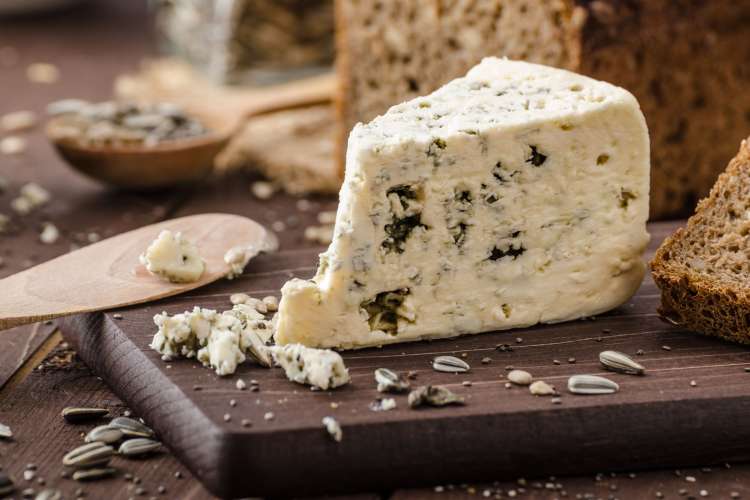
You’ve likely been told your whole life to avoid eating anything with mold, but when it comes to blue cheese, mold is the key ingredient. While its strong aroma and flavor can be polarizing, this crumbly cheese is surprisingly versatile if you’re willing to give it a chance. Some might argue all blue cheeses taste the same, but there’s more variety than you might think in those green and blue veins. And let's not overlook the health benefits of cheese in general. According to WebMD, eating cheese can reduce visceral fat and boost bone density. So, why not sprinkle some on salads, fruit or even your dessert board?
Jump to Section
- What Exactly Is Blue Cheese?
- Blue Cheese Origin & Name
- How Is Blue Cheese Made?
- Is Blue Cheese Safe to Eat?
- Blue Cheese Flavor Profile
- Creative Uses for Blue Cheese
- Blue Cheese Pairings
- Health Benefits of Blue Cheese
- How to Make Blue Cheese at Home
- Blue Cheese FAQs
What Exactly Is Blue Cheese?
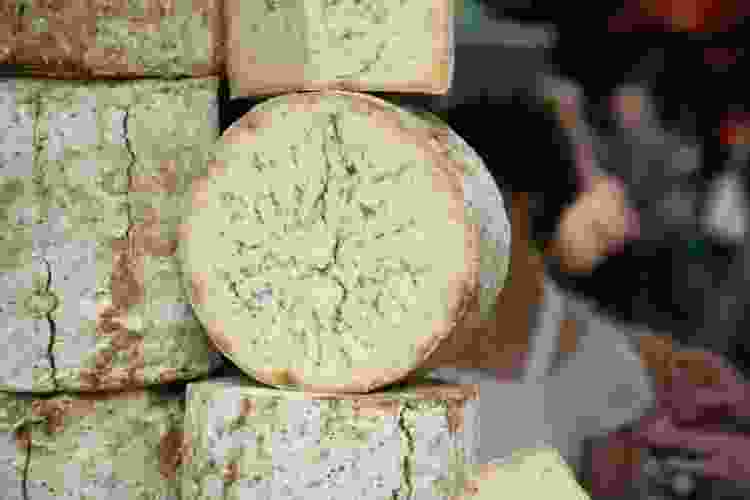
Blue cheese has been around for centuries and is probably found in more dishes than you would expect. From salads to dips and sometimes even in decadent dessert cheese assortments or bold ice cream flavors, it has wonderful complexities that make it beloved (and hated). But what exactly is blue cheese? At its most basic, it’s a cow’s milk cheese that’s been infused with Penicillium roqueforti spores, a type of fungus. Some varieties, like the world-famous Roquefort, are made from ewe (sheep) milk.
Blue cheese comes in a range of varieties that differ in taste, texture and appearance. Some are soft and spreadable, while others are firm and crumbly. Popular varieties include French Roquefort, Danish Danablue, Italian Gorgonzola and English Stilton.
Blue Cheese Origin & Name
While many countries have their own versions of blue cheese, its origins trace back to France, specifically the village of Roquefort-sur-Soulzon. The name 'blue cheese' comes from the moldy veins that run through it, giving it a characteristic blue or green color. In France, blue cheese is referred to as fromage bleu, with Roquefort being one of the most famous types. Roquefort is unique not only for its name but also for its distinct taste and the use of sheep's milk, setting it apart from other varieties.
How Is Blue Cheese Made?
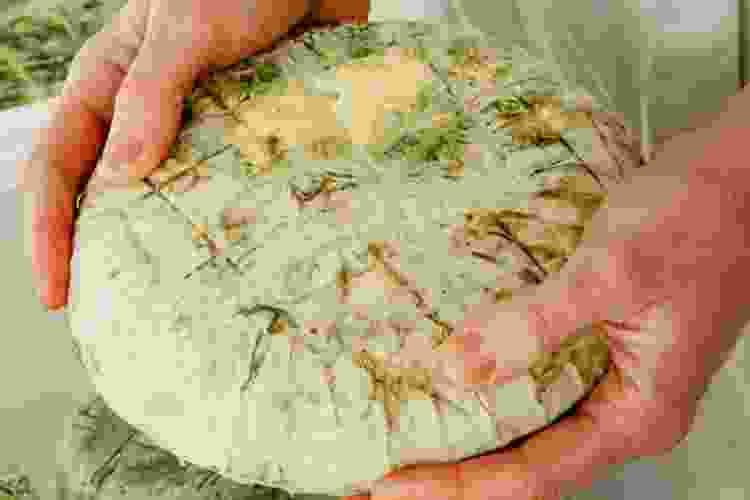
All blue cheese is made using Penicillium roqueforti spores, which are mixed into the milk or curd. Once the cheese starts to solidify, it’s pierced with stainless steel needles, allowing the spores to spread throughout the body of the cheese, not just the surface. This aeration process is crucial for mold growth, as it facilitates airflow into the cheese. The cheese is then aged for about three to six months.
The different types of blue cheese vary based on four key factors: salt content, moisture, temperature and aging time. For example, Danish blue cheese is often aged in caves, a process that adds a unique flavor and helps maintain a higher moisture content.
Is Blue Cheese Safe to Eat?
Yes, that's why it's so popular! While the general rule is to avoid eating mold, some strains are safe, like the one used to make blue cheese. However, if you spot blue or green mold growing on your leftovers, it's important to remember that it’s not the same mold used in cheese production. Always throw out moldy food!
The only time you might want to pass on the blue cheese is if you have an allergy or if you’re pregnant. While some blue cheese is made with pasteurized milk, not all is. Milk pasteurization aside, eating mold while pregnant isn’t a great idea, and most doctors recommend avoiding soft cheeses, even if pasteurized.
Blue Cheese Flavor Profile
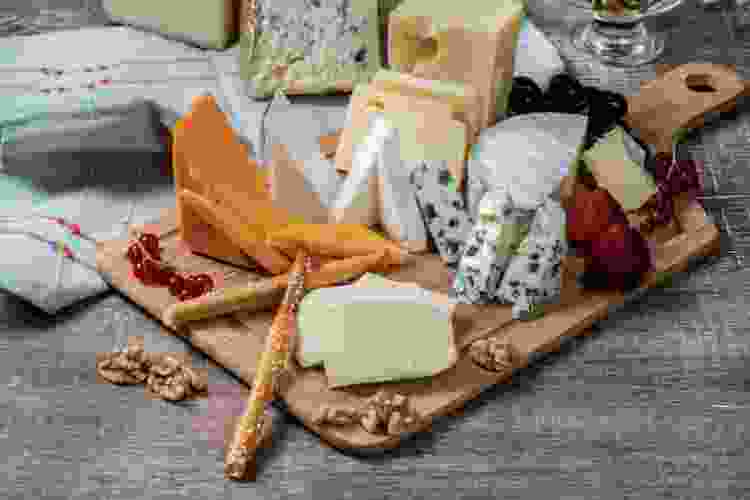
Blue cheese, like all cheeses, has a distinct flavor. It’s commonly described as pungent and earthy, sharp and salty or creamy and tangy, making it a fantastic addition to any charcuterie board. The flavor of blue cheese can vary significantly based on several factors: salt level, moisture content, temperature and the time it spends aging. These variations give rise to different types of blue cheese, each with its own unique profile.
Roquefort
The French classic has an earthy, tangy flavor, often with a strong, sharp bite. It’s made from sheep's milk and aged in the caves of Roquefort-sur-Soulzon, giving it a unique and traditional taste.
Stilton
Known as the king of English cheeses, Stilton is milder and more crumbly than other blue cheeses. It has a subtle, earthy flavor with a creamy texture and a slightly sweet finish.
Gorgonzola
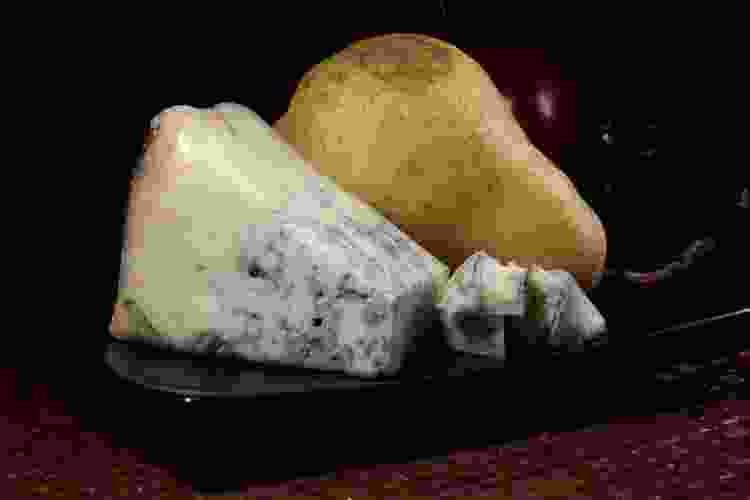
This Italian variety can range from mild to sharp, with a rich, tangy flavor. Gorgonzola pairs wonderfully with sweetness, making it a great complement to fruits like pears, apples and strawberries.
Danish Blue
Often aged in caves, Danish blue has a creamy texture and a sharp, intense flavor. It’s milder than Roquefort and Stilton but still offers that unmistakable blue cheese punch.
Creative Uses for Blue Cheese
While you’ve probably enjoyed blue cheese with chicken wings or as crumbles in a Cobb salad, there are plenty of more creative ways to use this bold ingredient.
Pizza Topping

For a unique twist on pizza, top it with blue cheese for a rich and tangy flavor. It’s a great option if you're hosting a Fourth of July picnic and want to try something beyond the usual toppings.
Blue Cheese and Pear Ice Cream
Get adventurous with a blue cheese and pear ice cream. Add a drizzle of honey and some toasted walnuts for a flavor-packed dessert. On a side note, an at-home ice cream maker is a great gift for foodies, even if they’re not making blue cheese ice cream.
Roasted Vegetables
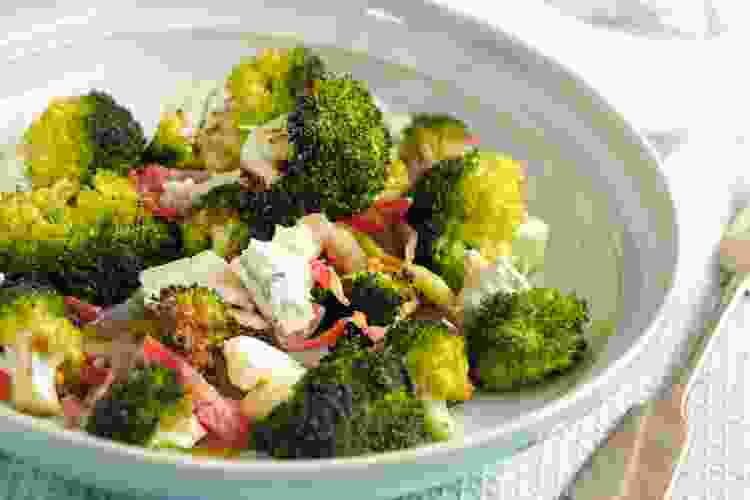
The creamy yet sharp nature of blue cheese complements roasted vegetables like beets or summer squash. Crumble it on top to to give your veggie dishes a rich, complex flavor.
Quesadillas and Burgers
Melt blue cheese on a grilled chicken quesadilla with caramelized onions, or use it as a punchy addition to your burger for an extra savory kick.
Blue Cheese Scramble or Omelette
For real blue cheese lovers, a scramble or omelette with a few crumbles will be a legendary menu item for any brunch party idea.
If you're looking to hone your kitchen skills and experiment with ingredients like blue cheese, online cooking classes are a great way to learn new techniques. You can also explore in-person classes in cities like cooking classes in Boston, cooking classes in Chicago or cooking classes in Baltimore for a fun and delicious night out.
Blue Cheese Pairings
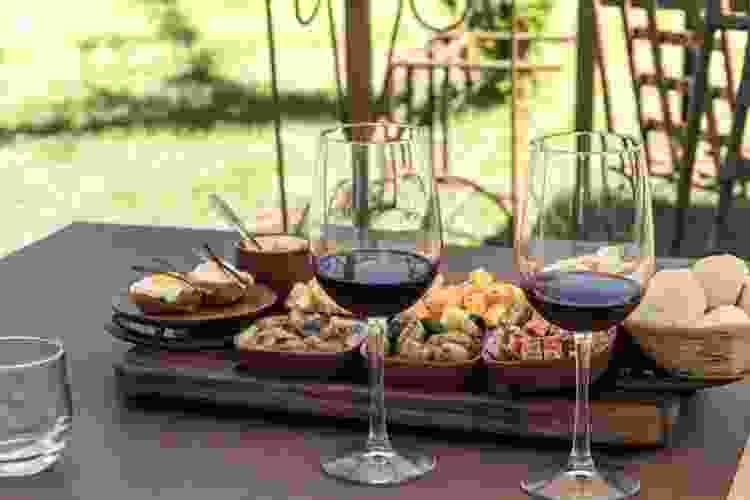
While blue cheese can be polarizing, you may be surprised by how well it pairs with certain wines. For example, steak and blue cheese become even more delicious with a glass of Cabernet Sauvignon or Malbec. Or, if you're enjoying blue cheese as part of a post-dinner treat, try pairing it with Port or Sherry. Chardonnay also complements blue cheese, especially when it’s served on a fresh salad.
Health Benefits of Blue Cheese
Blue cheese is a good source of calcium, which is beneficial for bone health and can help prevent osteoporosis. Although it may not meet your entire daily calcium requirement on its own, using it as a topping or garnish is a flavorful way to contribute to your intake. Some studies also suggest that spermidine in blue cheese may help reduce the risk of heart attacks, particularly when part of an overall healthy lifestyle. Additionally, blue cheese contains protein, which is essential for maintaining lean muscle mass and boosting metabolism.
How To Make Blue Cheese at Home
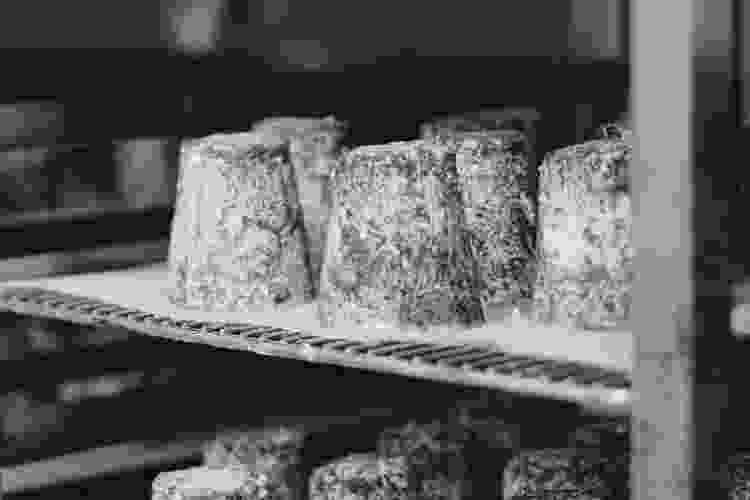
To make blue cheese at home, you’ll need several key ingredients and tools: Penicillium roqueforti spores (the mold), unpasteurized cow’s, goat’s or sheep’s milk, stainless steel needles and a temperature-controlled aging environment. These factors make it quite involved and, honestly, may be more trouble than it's worth for most people.
The basic process involves making a simple cheese base by adding rennet to the milk of your choice, heating the mixture until curds form and then adding your mold spores. The cheese must then be aerated with stainless steel needles, shaped into blocks or wheels and aged in a cool, humid environment (like a cave or a cheese cave or cheese aging cabinets).
You’ll also need to experiment with salt, temperature and different milk types to achieve the texture and flavor you desire. While it’s possible to make your own blue cheese, for most people, buying it from the store will save time and effort!
Where to Buy Blue Cheese?
The good news is, blue cheese is widely available and can be found at most grocery stores, whether in wedges or crumbles. For a broader selection, head to specialty markets like Whole Foods, Trader Joe’s or Wegmans, which offer premium blue cheeses from both domestic and international producers.
If you're looking to try different varieties, places like Murray’s Cheese or Cowgirl Creamery carry a wide range of blue cheeses, including artisanal options and local favorites like Point Reyes Blue and Rogue River Blue. For even more specialty choices, iGourmet and Cheese Grotto are fantastic online retailers with an impressive selection of blue cheese, often including unique or hard-to-find varieties. These retailers also provide helpful shipping options, so you can enjoy a cheese-tasting experience right at home.
Blue Cheese FAQs
Is Blue Cheese Good or Bad for You?
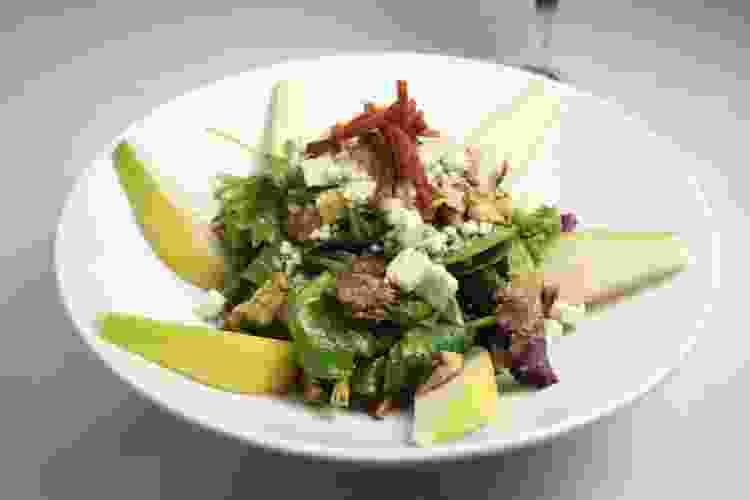
Unless you have allergies or are pregnant, blue cheese can definitely be part of a healthy diet. A small serving won’t have any negative effects, but it's not something to rely on for your daily calcium or protein needs.
What Is the Blue Stuff in Blue Cheese?
The blue or green veins that give blue cheese its signature look are caused by Penicillium roqueforti, a mold spore that is perfectly safe to eat. This mold ferments and adds a distinct flavor to the cheese. It’s injected into the cheese through hollow needles, allowing it to spread through the center of the wedge or wheel, creating those famous marbled veins.
Can You Eat Blue Cheese By Itself?
Absolutely! While many enjoy blue cheese on a salad or as part of a charcuterie board, you can totally enjoy it on its own. For the full flavor experience, try pairing it with something sweet, like honey or fresh fruit. The sharpness of blue cheese complements these flavors beautifully. A simple spread of blue cheese with fruits, nuts and crackers makes for an elegant, easy snack or picnic food idea.
Understanding blue cheese might not make it your go-to, but hopefully, it helps you appreciate its complexity. For blue cheese lovers, there’s a whole world of variety out there — different countries of origin, unique textures and varying levels of funk. Each variety has its own character, making it more than just a topping. Think beyond the salad! Blue cheese shines in many dishes, from melting it on a burger to incorporating it into a quesadilla. Get creative and let blue cheese bring something special to your next meal.
For even more fun foodie ideas, check out other experiences happening on Classpop!

